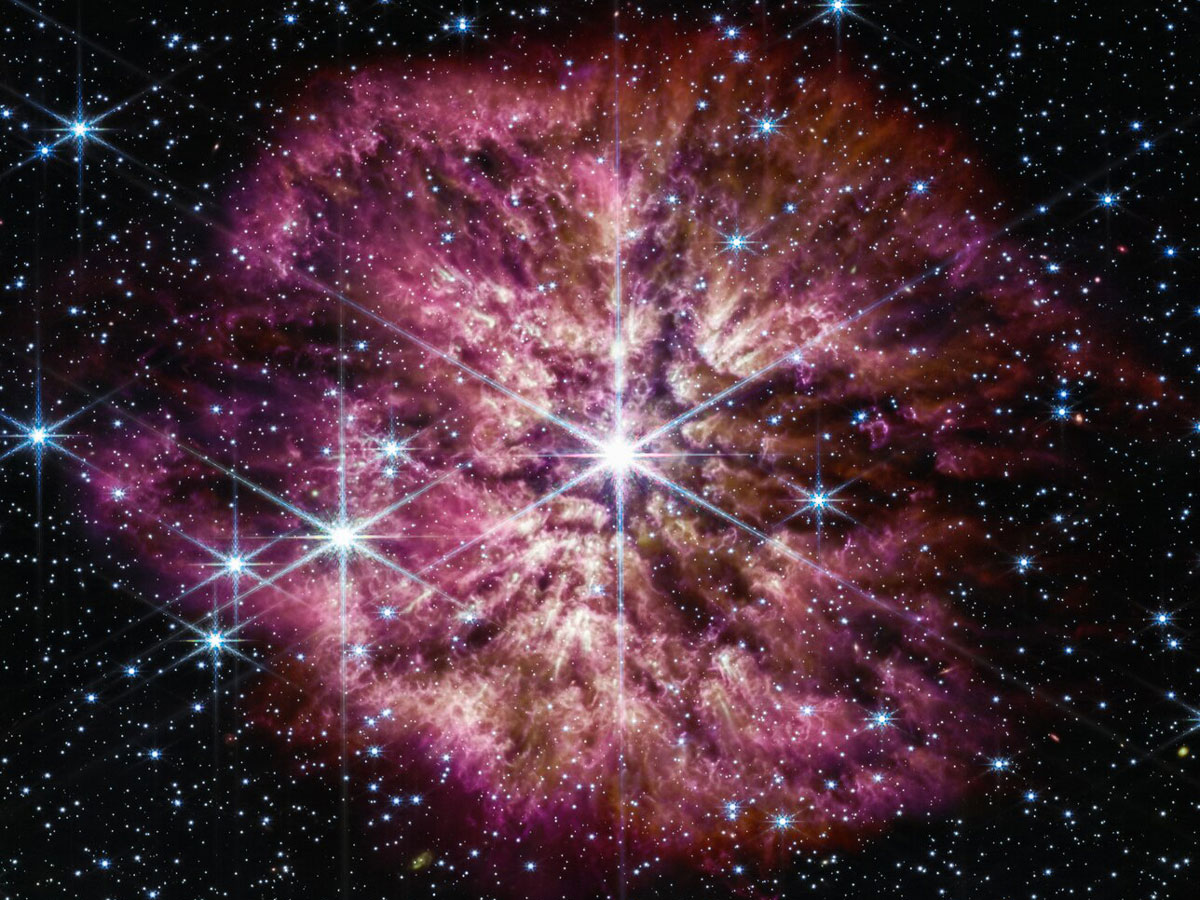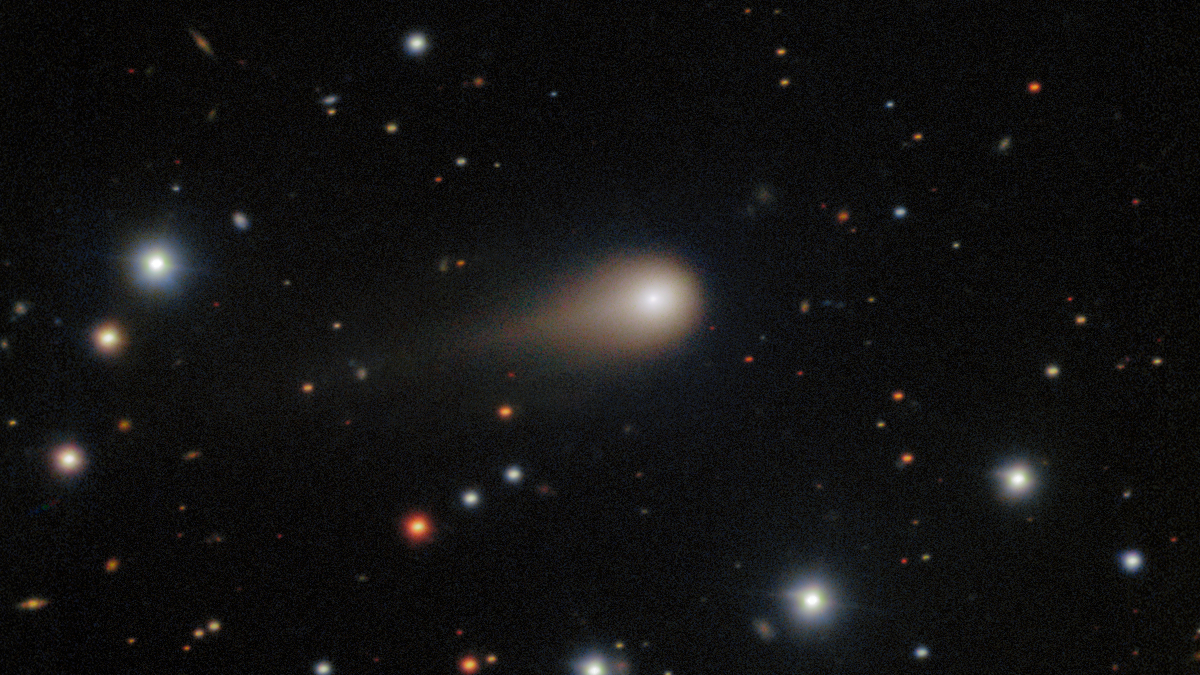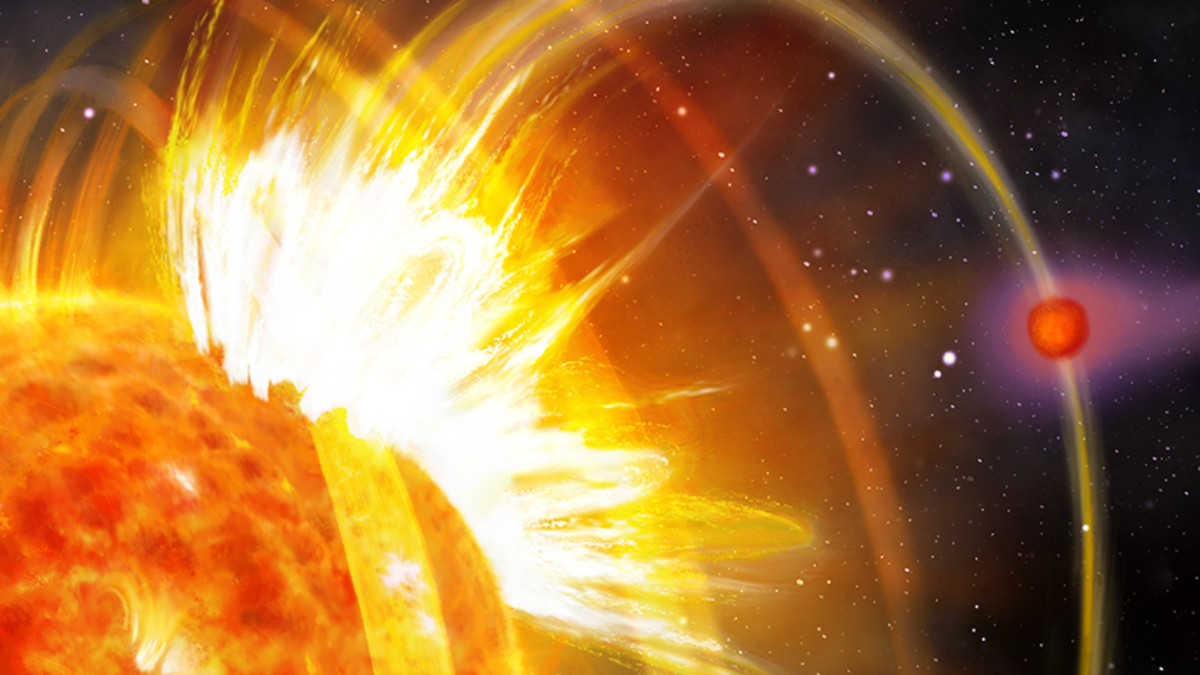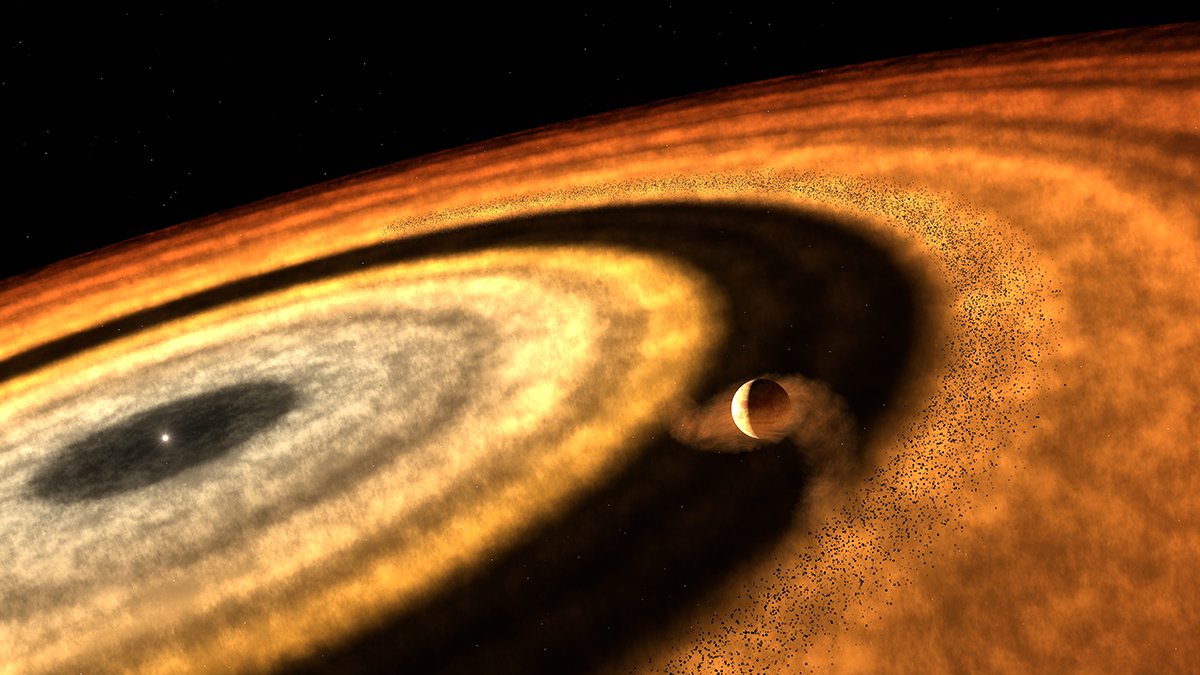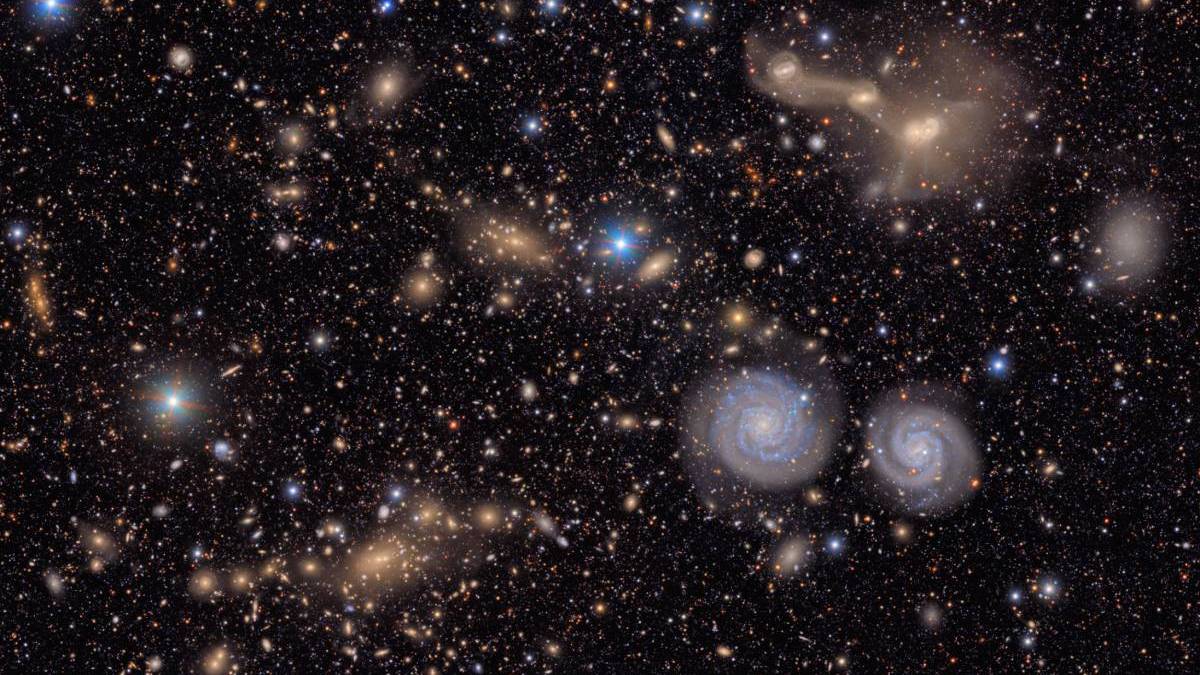A star 2 billion light-years away apparently shed most of its outer layers before exploding, providing new insights into stellar structure—and new mysteries for astronomers to solve.
astronomy
Tilted Planet System? Maybe It Was Born That Way
New observations could shed light on the degree to which misalignment in a planet-forming disk contributes to skewed planetary orbits.
How an Interstellar Interloper Spurred Astronomers into Action
Valuable lessons from previous interstellar objects allowed scientists to develop a more rapid response when the third one arrived in July.
Exoplanet Triggers Stellar Flares and Hastens Its Demise
HIP 67522 b can’t stop blasting itself in the face with stellar flares, a type of magnetic interaction that scientists have spent decades looking for.
Alex Teachey: Elevating Astronomy with the Arts
This actor-turned-astronomer found success researching exomoons. Now he’s ready for another career change.
This Exoplanet May Have Grown Stranger as It Journeyed Starward
WASP-121b, an already unusual planet, might have a remote origin that explains some of its peculiar properties—from iron rain to the unexpected presence of methane.
Rubin Observatory Stuns and Awes With Sprawling First Look Images
Wow. Just wow.
The Late, Great Gaia Helps Reveal Asteroid Masses
Astronomers are using data from the recently decommissioned star-mapping satellite to help determine masses and more accurate orbits of celestial bodies closer to home.
NASA Science Faces an “Extinction-Level Event” with Trump Draft Budget Proposal
The initial draft of President Donald Trump’s budget request proposes devastating cuts to NASA’s science research, future space missions, and field centers.
A Super Speedy Star May Be Streaking Through Our Galaxy
Astronomers suggest the star is towing along an exoplanet. The system could be traveling fast enough to escape the Milky Way.

